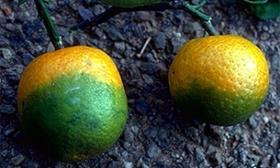
US Agriculture Secretary Tom Vilsack has announced that an extra US$25m of funding will be made available for research and Cooperative Extension Service projects to combat huanglongbing (HLB), commonly known as citrus greening disease. The funding comes from the 2014 Farm Bill. USDA allocated another US$6.5m to several other projects through its Huanglongbing Multi-Agency Coordination Group (HLB MAC), bringing the total allocated to US$31.5m.
“USDA is committed to the fight against citrus greening, including making major research investments to counter this destructive disease,” said Vilsack. “The citrus industry and the thousands of jobs it supports are depending on groundbreaking research to neutralise this threat.”
The announcement provides funding to the Citrus Disease Research and Education Programme (CDRE) and is a supplement of the Specialty Crop Research Initiative (SCRI). The 2014 Farm Bill makes provision for US$25m per year, or a total of US$125m over the next five years, for citrus health research.
Priority will be given to projects that are multistate, multi-institutional, or trans-disciplinary and include clearly defined mechanisms to communicate results to producers.
Also today, USDA's Huanglongbing Multi-Agency Coordination Group (HLB MAC) announced funding allocations for three new projects to combat HLB. The first project will commit approximately US$2m to field test antimicrobials that have shown promise in combating HLB in laboratory and greenhouse studies.
The second, also funded for up to US$2m, will support the deployment of large-scale thermotherapy since studies have shown heating a tree to 120 degrees for approximately 48 hours can kill the HLB bacterium in the upper part of the tree, allowing the tree to regain productivity. This funding will address the challenge of identifying a quick and practical way for growers to use the technology on a large scale.
For the third project, the MAC Group is providing about US$2.5m to establish several model groves in cooperation with Florida Citrus Health Management Areas. A model grove would use best management practices—including systematic surveys, timely chemical treatments, new planting strategies, and the removal of dead and abandoned groves – so growers can produce healthy citrus crops even in the presence of HLB.



